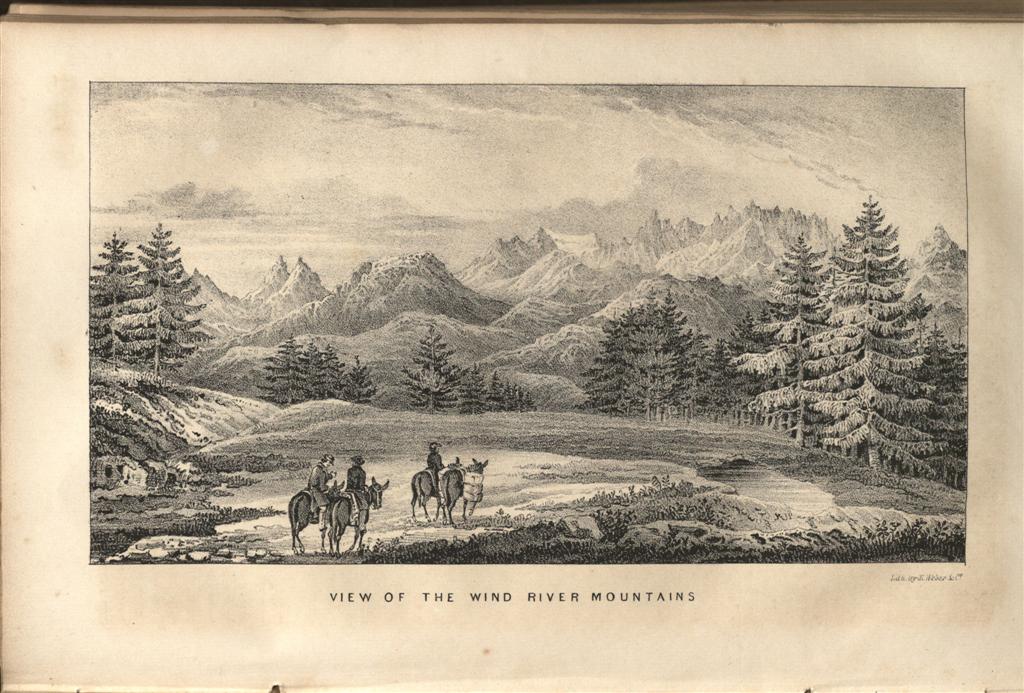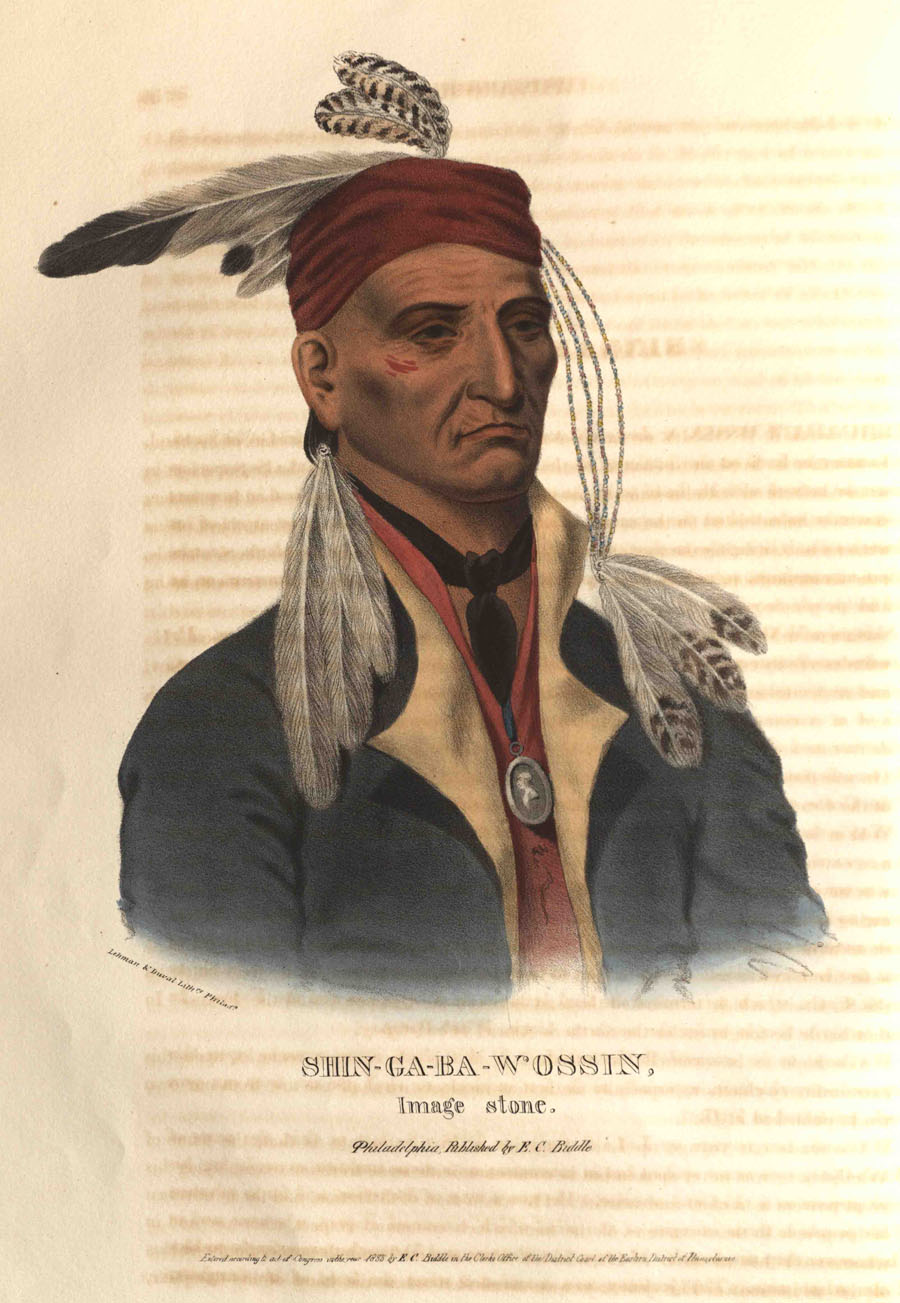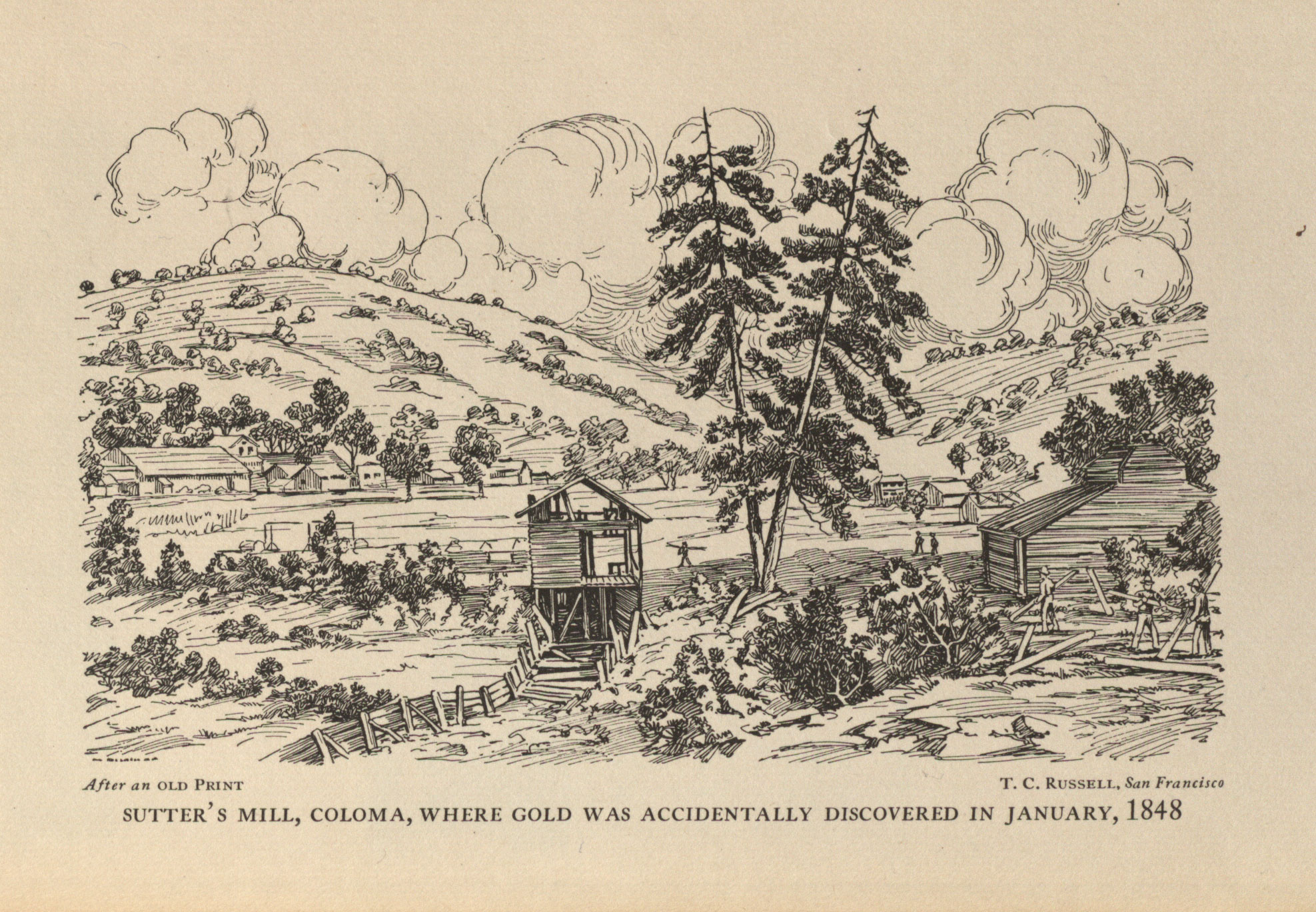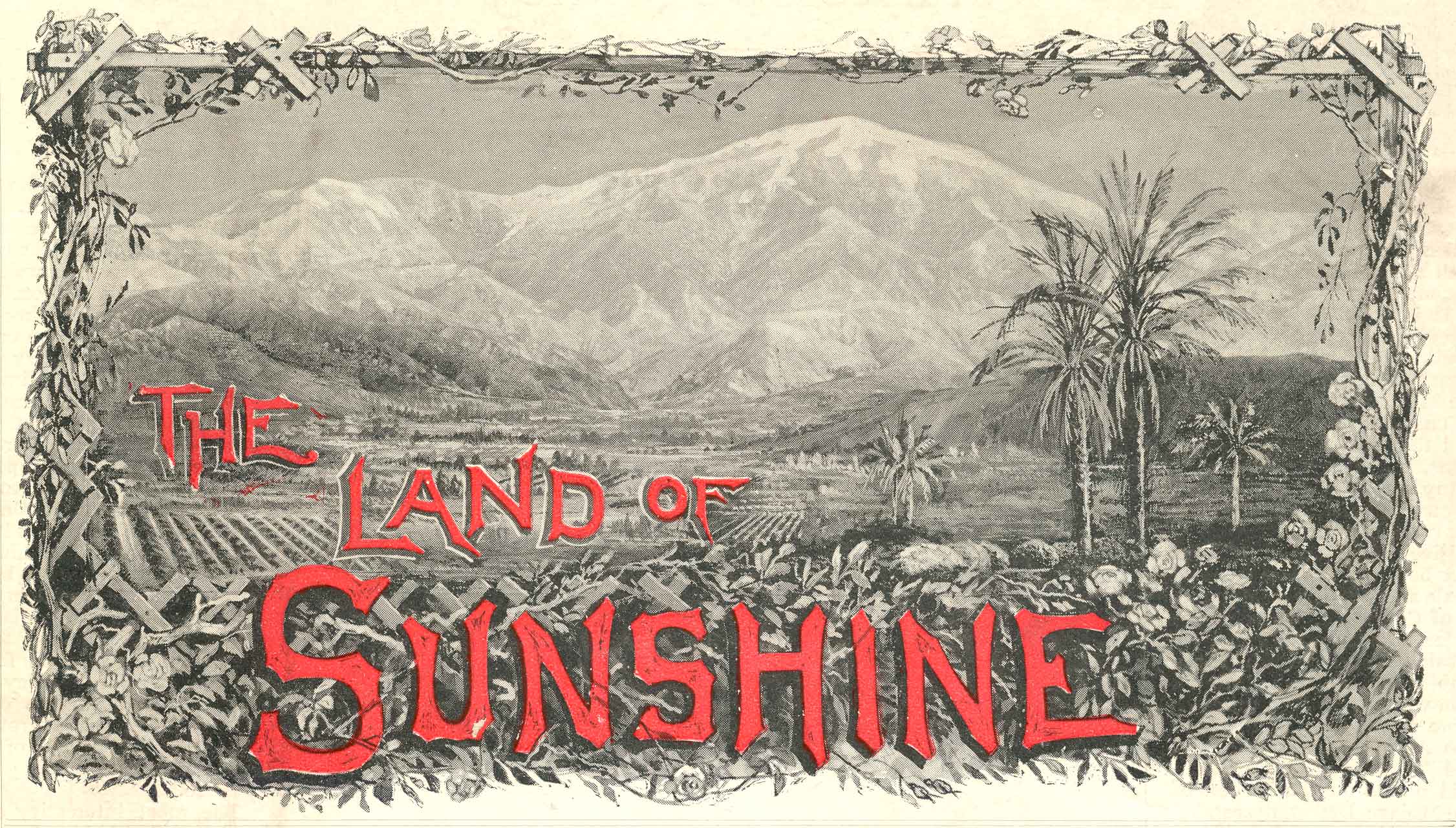|

|
Table
of Contents
Explorations
of the West
Sam
Dalsheimer
Caitlin
Goss
Nick
Schradle
David Sena
Representations
of
Native Americans
Richard
Dybas
Amanda Leong
Cynthia
Robertson
The
Western
Railroads
Ronni Toledo
Kayt
Fitzmorris
Jon Ingram
David
Halperin
The
California
Gold Rush
Jordan Helle
Adam
Lawrence
Marisa
Pulcrano
Patrick Ryan
California
as Western Destination/
Mediterranean Boosterism
Maddy
Kiefer
Danielle
Mantooth
Molly
Nelson
Stefanie
Ramsay
Return
to top
Back
to Online Exhibits
Back
to SC Landing Page
|
Occidental College
Library's Special Collections
contains an array of rare historical
documents which reflect upon the
United States' western experience.
This library research project draws
upon texts from three special
collections: The
Max and Virginia Hayward
Californiana Collection, the Pauley-Voorhis
Western Americana Collection
and the John
Lloyd-Butler Railroadiana
Collection.
The students in the History 295:
American Frontiers course, taught by
Jeremiah B.C. Axelrod, examined
selected texts as part of their
research in the Fall of 2009. Their
observations, commentary, and
analysis, presented below, offer a
window into the experience of the
frontier in American history as well
as enhance the descriptive record
for each work. The online catalog
records for these primary resources
includes links to these analyses so
as to offer extended descriptions of
the texts for other researchers.
About
this Project /
Acknowledgements
|
|
Exploration
of the West
 The
exploration texts of Lewis
and Clark, John C. Fremont,
and Charles Wilkes
demonstrate a large array of
American sentiments of the
early 19th century towards
the frontier. In these texts
there is an increasing
audacity in tone as the
explorers grow more
confident with the lay of
the land. This confidence is
indicative of the United
States’ growing comfort with
the western territories and
its changing values as seen
through the doctrine of
Manifest Destiny. All four
expeditions were sponsored
by the United States
government with very strict
goals of cataloging the
landscape and wildlife (the
natives also being part of
the “wildlife”) and how to
best manipulate them. The
language of these narratives
is scientific and analytical
on all accounts but
especially towards Native
Americans. What started as a
gentle yet patronizing
interest by Lewis and Clark
turned into scorn and
distrust in Fremont and
finally transformed into
Wilkes’ near blatant racism
towards the natives and
espousal of white
superiority. Also
distinguishing these texts
is the fact that they were
all written by military men.
Their training and
propensity to evaluate
situations based on
fulfilling the United States
government’s expectations
not only make for highly
professionalized documents
but also indicate a martial
attitude towards the
domination of a land and its
people. The
exploration texts of Lewis
and Clark, John C. Fremont,
and Charles Wilkes
demonstrate a large array of
American sentiments of the
early 19th century towards
the frontier. In these texts
there is an increasing
audacity in tone as the
explorers grow more
confident with the lay of
the land. This confidence is
indicative of the United
States’ growing comfort with
the western territories and
its changing values as seen
through the doctrine of
Manifest Destiny. All four
expeditions were sponsored
by the United States
government with very strict
goals of cataloging the
landscape and wildlife (the
natives also being part of
the “wildlife”) and how to
best manipulate them. The
language of these narratives
is scientific and analytical
on all accounts but
especially towards Native
Americans. What started as a
gentle yet patronizing
interest by Lewis and Clark
turned into scorn and
distrust in Fremont and
finally transformed into
Wilkes’ near blatant racism
towards the natives and
espousal of white
superiority. Also
distinguishing these texts
is the fact that they were
all written by military men.
Their training and
propensity to evaluate
situations based on
fulfilling the United States
government’s expectations
not only make for highly
professionalized documents
but also indicate a martial
attitude towards the
domination of a land and its
people.
|
Representations
of Native Americans
 Representations
of Native Americans during
the 1830’s and 1840’s were
literally and physically
produced by Thomas McKenney,
Charles Bird King, and James
Hall in their series The
History of the Indian Tribes
of North America, with
biographical sketches and
anecdotes of the Principle
Chiefs. This collection of
portraits and biographies of
influential Native American
chiefs and leaders created a
government catalogue of
Native Americans with whom
negotiation and treaties
took place. However, the
images and representations
of the Native Americans
within the collection set a
stereotypical reflection of
and bunching together of all
Native Americans during this
time period, which continues
to play an important role in
modern day portrayal of
Native Americans. Representations
of Native Americans during
the 1830’s and 1840’s were
literally and physically
produced by Thomas McKenney,
Charles Bird King, and James
Hall in their series The
History of the Indian Tribes
of North America, with
biographical sketches and
anecdotes of the Principle
Chiefs. This collection of
portraits and biographies of
influential Native American
chiefs and leaders created a
government catalogue of
Native Americans with whom
negotiation and treaties
took place. However, the
images and representations
of the Native Americans
within the collection set a
stereotypical reflection of
and bunching together of all
Native Americans during this
time period, which continues
to play an important role in
modern day portrayal of
Native Americans.
Henry Schoolcraft’s
Information Respecting the
History Condition and
Prospects of the Indian
Tribes of the United States
provides the reader a broad
view of the General History,
Mental Type, Antiquities,
Physical Geography, Tribal
Organization, Intellectual
Character, and Government
Statistics of all the
recorded tribes of Indians.
These volumes provide
valuable first-hand drawings
and sketches of Indian
artifacts, written language,
and villages drawn by
Captain S. Eastman. The
government records listed in
these editions covers the
comprehensive history of the
Indians by source of income,
agriculture, amount of
workers, etc. Henry
Schoolcraft provides a great
text for anyone looking to
find the History of Indian
tribes and information on
every facet of these tribes.
Within the extensive volume
II of The Works of Hubert
Howe Bancroft: Civilized
Nations of his Native Races
collection, he clarifies, in
a rather ignorant manner,
the attainment of a
civilized mind from
savagery, or the aggregate
of Native American peoples
he chronicles. He describes
the binaries and absolutes
of civilization and
savagery, often in
contradiction of previous
statements, whereby he
associates the disbelief in
civilization irrationally to
choosing disease and death
over the wholesomeness of
health in life, for
instance. The term savagery,
by his definition, not only
debases the Native American
position on the frontier as
desensitized and detached
from the significance of
life, but portrays them as
lacking what the rest of
society, or non-Native
settlers come to “benefit”
from, this rich,
comfortable, luxury called
civilization.
Information
Respecting the
History Condition
and Prospects of the
Indian Tribes of the
United States
Richard Dybas
The
Works of Hubert Howe
Bancroft Volume II
The Native Races:
Civilized Nations
Amanda Leong
History
of the Indian Tribes
of North America,
with biographical
sketches and
anecdotes of the
Principle Chiefs
Cynthia Robertson
Return
to Top
|
The Western Railroads
 From
initial surveys of the
territory upon which to
build the railroad to
advertisements of new
regions accessible by the
railroad, our four texts
outline the evolution of
American conceptions of the
frontier from the mid- to
the late-19th century.
Volume XI of the War
Department’s Reports of
Explorations and Surveys of
1853 examines the land
between the Mississippi
River and the Pacific Ocean
and the potential for a
cross-country railroad.
Frederick Jackson Turner’s
thesis on the frontier
likely stemmed from his
examination of such
documents. The surveyors’
accounts allude to the
frontier as a source of
great adventure in which
developers could help
establish new regions by
conquering the savagery of
nature. The addition of such
claims to the Reports
suggests an underlying
boosterism and potential for
new beginnings on the
frontier. While obviously
written so as to persuade
the War Department to
approve of the construction
of the railroads, the ideas
emphasized by the explorers
were later mimicked in
advertisements for the
railroads. Many parts of
Crofutt’s Trans-Continental
Tourist Guide of 1871 stress
the benefits of the railroad
as a corridor to the West
for pioneers to more easily
access and take control over
land. In an early
incarnation of the modern
tourist guide, such claims
embodied America’s notion of
“Manifest Destiny,” of
having a divine right to
expand across, and later
beyond, North America. This
focus still shows an
extension of Turner’s
theories of the frontier.
The changes occurring out
west, however, can be seen
in the depiction of the far
west as the ultimate
destination, rather than the
central territories and
states. From
initial surveys of the
territory upon which to
build the railroad to
advertisements of new
regions accessible by the
railroad, our four texts
outline the evolution of
American conceptions of the
frontier from the mid- to
the late-19th century.
Volume XI of the War
Department’s Reports of
Explorations and Surveys of
1853 examines the land
between the Mississippi
River and the Pacific Ocean
and the potential for a
cross-country railroad.
Frederick Jackson Turner’s
thesis on the frontier
likely stemmed from his
examination of such
documents. The surveyors’
accounts allude to the
frontier as a source of
great adventure in which
developers could help
establish new regions by
conquering the savagery of
nature. The addition of such
claims to the Reports
suggests an underlying
boosterism and potential for
new beginnings on the
frontier. While obviously
written so as to persuade
the War Department to
approve of the construction
of the railroads, the ideas
emphasized by the explorers
were later mimicked in
advertisements for the
railroads. Many parts of
Crofutt’s Trans-Continental
Tourist Guide of 1871 stress
the benefits of the railroad
as a corridor to the West
for pioneers to more easily
access and take control over
land. In an early
incarnation of the modern
tourist guide, such claims
embodied America’s notion of
“Manifest Destiny,” of
having a divine right to
expand across, and later
beyond, North America. This
focus still shows an
extension of Turner’s
theories of the frontier.
The changes occurring out
west, however, can be seen
in the depiction of the far
west as the ultimate
destination, rather than the
central territories and
states.
Similarly, the Rand
McNally’s Guide to the
Pacific Coast of 1893
promotes the West as an
ideal location for
settlement which enabled
people to explore new,
entirely different worlds,
even just in traveling from
one part of California to
another. While still
somewhat enthusiastic about
adventure, the perceived
closing of the frontier
prompted railroad companies
and advertisers to place
less emphasis on the need to
“conquer” the land and more
on the benefits of living in
the region. Nonetheless, the
opportunity to settle in a
new region still portrayed
the West, at least
implicitly, as a place to
create new lives and
identities. Even when
traveling to unsettled
lands, the railroad became a
corridor of domesticity for
which to travel through
foreign spaces.
As exemplified by portions
of Health and Pleasure on
“America’s Greatest
Railroad”, railroad
companies also began
representing relatively
unsettled areas as locations
where people could get
closer to nature. However,
they no longer described
nature as a savage and
dangerous, and thus
masculine, but rather as a
place in which people could
be psychologically and
physically rejuvenated. A
more therapeutic ethos took
hold and claimed that people
“needed” temporary, rather
than permanent, sojourns to
nature to reduce stress and
to renew their tranquility.
Despite a supposed closing
of the frontier, as Turner
stated in the same year that
both the McNally Guide and
Health and Pleasure were
released, the railroad
supposedly enabled people to
simulate Turner’s challenges
in different ways to obtain
similar benefits.
Health
and Pleasure on
"America's greatest
railroad": Descriptive
of Summer Resorts and
Excursion Routes,
Embracing More Than
One Thousand Tours
Ronni Toledo
Reports
of Explorations and
surveys: to
ascertain the most
practicable and
economical route for
a railroad from the
Mississippi River to
the Pacific Ocean.
Made under the
direction of the
secretary of war, in
1853
Kayt
Fitzmorris
Crofutt’s
Trans-Continental
Tourist’s Guide
Jon
Ingram
Rand,
McNally & Co.'s
new guide to the
Pacific coast :
Santa Fé route:
California, Arizona,
New Mexico,
Colorado, and Kansas
David Halperin
Return
to Top
|
The
California Gold Rush
 The California
Gold Rush infused images
of opportunity and
individual glory to
thousands of prospectors
traveling west, creating
an event that was dictated
more by fictitious ideas
of wealth than of the
actual possibility. For
many, the event helped
solidify the possibilities
out west, as “the
discovery of gold, always
an object of ambition, has
not infrequently been
prosecuted with eagerness
and avidity, and the
wildest schemes have been
proposed to obtain these
coveted treasures” (Shuck,
1869). The hysteria
created by the Gold Rush,
first appearing in San
Francisco and then
throughout the entire
state of California,
reshaped not only the
region, but also the
entire country, something
Hubert Howe Bancroft
describes in the History
of California Volume
XXIII. However, it was the
hysteria that produced
visions of widespread gold
and wealth, as the event
itself was short-lived and
not nearly as prosperous
as it was exaggerated to
be out west. The California
Gold Rush infused images
of opportunity and
individual glory to
thousands of prospectors
traveling west, creating
an event that was dictated
more by fictitious ideas
of wealth than of the
actual possibility. For
many, the event helped
solidify the possibilities
out west, as “the
discovery of gold, always
an object of ambition, has
not infrequently been
prosecuted with eagerness
and avidity, and the
wildest schemes have been
proposed to obtain these
coveted treasures” (Shuck,
1869). The hysteria
created by the Gold Rush,
first appearing in San
Francisco and then
throughout the entire
state of California,
reshaped not only the
region, but also the
entire country, something
Hubert Howe Bancroft
describes in the History
of California Volume
XXIII. However, it was the
hysteria that produced
visions of widespread gold
and wealth, as the event
itself was short-lived and
not nearly as prosperous
as it was exaggerated to
be out west.
This
study will focus on defining
some of the key factors of
the Gold Rush, and use
primary source documents to
detail the experience of the
event. The California
Scrapbook, written by Oscar
T. Shuck, examines the
mining tools used by
prospectors during the Gold
Rush, emphasizing the
technological advances that
changed both the state of
California and the event
itself. The idea of
“panning” for gold was often
viewed as the main form of
mining during the event,
yet, in reality, it was
almost a complete myth,
exaggerated by the hysteria
caused by the event. Another
key factor during the Gold
Rush was the contact zone
between Native Americans
and prospectors. Frank
Marryat illustrates the
relationship between these
two groups in his book,
Mountains and Molehills.
Prospectors often treated
these people as
bloodthirsty savages, a
treatment which Edward
Said would define as a
clear example of
Orientalism, thus allowing
prospectors to obtain
powerful hegemony over
these indigenous people.
Furthermore, the lack of
government and political
institutions created an
emphasis on individuality
in a world of increasing
crime, which is expressed
in The Letters of Dame
Shirley, by Louise Amelia
Knapp Smith Clapp. This
problem was a key reason
why settlements became so
dangerous, as the lack of
an organized society drove
prospectors to care little
about the ethics and laws
of society and thus, focus
entirely on individual
ideals of wealth.
The Gold Rush
impacted the not only the
country, but also the
world, as prospectors
became so engrossed with
the idea of wealth and
glory that they were
willing to give up almost
anything in order to have
a shot at the “American
Dream”. The mythologies of
the Gold Rush provided
people with an
unprecedented ambition;
the drive to obtain gold
fueled desires to obtain a
lifestyle that had the
potential to be
incredible. While the Gold
Rush was often viewed as a
powerful antidote to
withering western
expansion, its true nature
provided prospectors with
only dreams of wealth, as
almost everyone did not
“strike" it rich.
[i]
Cabeza de Vaca, Adventures
in the Unknown Interior of
America, (New Mexico:
Crowell-Collier Publishing
Company, reprinted in 1983),
p.63
[ii] Dame Shirley,
California in 1851[-1852] ;
the letters of Dame Shirley,
(San Francisco: The Grabhorn
Press, 1933), p. 120
[iii] Dame Shirley,
California in 1851[-1852] ;
the letters of Dame Shirley,
(San Francisco: The Grabhorn
Press, 1933), p. 122
History of
California Volume
XXIII
Jordan
Helle
California
Scrapbook
Adam Lawrence
California
in 1851[-1852] ; the
letters of Dame
Shirley
Marisa Pulcrano
Mountains
and Molehills
Patrick Ryan
Return to Top
|
|
California
as Western
Destination/Mediterranean
Boosterism
 Beginning in the
late nineteenth century,
boosters marketed Southern
California to residents of
other states, purporting
it to be a land of
permanent vacation.
Americans from the Midwest
and the East were
encouraged first to visit
the wonderful land of
California, and then
eventually make permanent
residence there. Charles
F. Lummis edited two
magazines that beautifully
illustrate the ethos of
the culture of boosterism.
Land of Sunshine and
Out West provided
ready-made examples of the
good life in California.
Particularly interesting
is the postcard provided
by Land of
Sunshine that could be
sent to friends and
families back home along
with a subscription to the
magazine. Lummis urged
newly transplanted
Californians to spread the
message of boosterism to
their Eastern friends by
saying, “You have not
forgotten them – the
people you grew up with
back in Ohio, or New York…
they often speak of you
and say, ‘He is out in
Southern California now,
making money hand over
fist. Lucky fellow! I wish
I were there.’” (13) Such
blatant promotion is
rampant in these
magazines. The focus of
this strategy was centered
around several themes.
These include quality of
climate, abundance of
agriculture,
romanticization of
California’s mission
history, and the real
estate boom of Hollywood.
The following essays
discuss these aspects of
California boosterism in
more depth. Beginning in the
late nineteenth century,
boosters marketed Southern
California to residents of
other states, purporting
it to be a land of
permanent vacation.
Americans from the Midwest
and the East were
encouraged first to visit
the wonderful land of
California, and then
eventually make permanent
residence there. Charles
F. Lummis edited two
magazines that beautifully
illustrate the ethos of
the culture of boosterism.
Land of Sunshine and
Out West provided
ready-made examples of the
good life in California.
Particularly interesting
is the postcard provided
by Land of
Sunshine that could be
sent to friends and
families back home along
with a subscription to the
magazine. Lummis urged
newly transplanted
Californians to spread the
message of boosterism to
their Eastern friends by
saying, “You have not
forgotten them – the
people you grew up with
back in Ohio, or New York…
they often speak of you
and say, ‘He is out in
Southern California now,
making money hand over
fist. Lucky fellow! I wish
I were there.’” (13) Such
blatant promotion is
rampant in these
magazines. The focus of
this strategy was centered
around several themes.
These include quality of
climate, abundance of
agriculture,
romanticization of
California’s mission
history, and the real
estate boom of Hollywood.
The following essays
discuss these aspects of
California boosterism in
more depth.
Lummis, Charles F. Land
of Sunshine. Land of
Sunshine
Publishing
Co., June 1894: 13.
Land
of Sunshine,
article: “The
Orange in Southern
California” –
Volume II, No. 4,
March 1894
Maddy
Kiefer
Land
of Sunshine, A
Magazine of
California and the
Southwest
Danielle
Mantooth
Olden Times
in Southern California
Molly Nelson
Out West
Stefanie Ramsay
Return to Top
|
|
About
this Project / Acknowledgements
Occidental
College's "American Frontier"
Research Seminar was developed by
Dr. Jeremiah B.C. Axelrod, Adjunct
Assistant Professor of History.
The library project
is developed in collaboration with
the Special Collections
Department:
Dale Ann Stieber, Special
Collections Librarian
with student staff
Henry Boule and Claire Lem and
Laila Tootoonchi and Anahid
Yahjian.
Title Image:
Thomas Moran, "Nearing Camp,
Evening on the Upper Colorado
River, Wyoming, 1882," from
http://www.boltonmuseums.org.uk/collections/art/paintings_prints_and_drawings/oil/nearing_camp_moran
|
|
Page last edited on 03/12/2013.
Occidental
College Library Special
Collections & College Archives
© 2009
Occidental College
|
|
|
